Photo

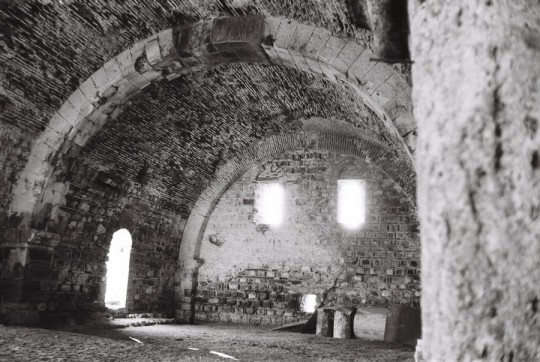
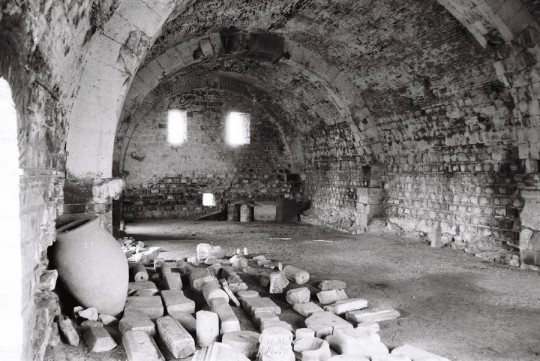

“In the Balkans one good example of this type is the Evrenos Bey Khan still standing in Loutra Traianoupolis [Ilıca in Turkish] in Greek Thrace, a few kilometres away from Alexandroupolis [Dedeağaç in Turkish]. It was built shortly after 1389, the date when Evrens made Hadj to Mecca and could add the title Hadji to his name, and the date of his demise, November 1417. The building inscription of this caravanserai broke to pieces long ago and was missing half a century until my dear colleague Heath Lowry had the luck to discover the inscription and publish it.“
Source: Kiel, Machiel. Belgrade 1521-1867
#greece#alexandroupoli#dedeağaç#batı trakya#türkiye#osmanlı#göçmen#balkan türkleri#türkisch#yunanist#western thrace#turkey#ottoman#balkan#balkanlar#rumeli#balkan turks#history#byzantine#bizans#thrace
10 notes
·
View notes
Photo

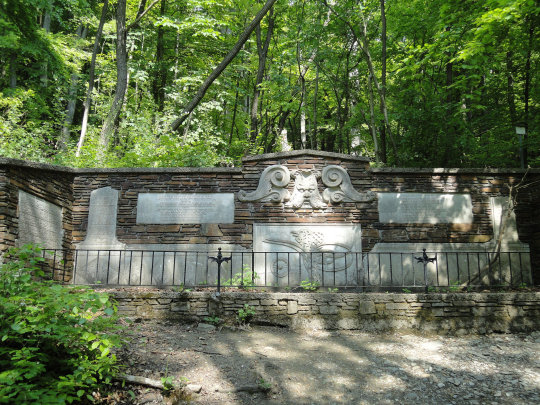



Türkensteine in Hadersdorf, Austria - war booty of the Austrians after they defeated the Ottoman army in Belgrade, 1690.
After the fall of Belgrade, Gideon Ernst von Laudon commanded that th mausoleum of the former Ottoman commander of Belgrade Elçi İbrahim Paşa should be removed from the cemetery, located around the mosque and trasnsported to his estate Hadersdorf, near Vienna. Inscription relating to the Ottoman siege in 1739 from the Istanbul Gate and a tughra of Sultan Mahmud II were transported to Vienna.
The reason for transportation of Belgrade’s Ottoman inscriptions to the country of the conquerors can be clarified by the term “war booty”. Around ten monuments/inscriptions from Belgrade can now be found dispersed in at least five countries in Central Europe. Nearly all inscriptions belong to the highest rulers - the Sultan, his family, viziers and governors as officials, and were taken away during the the 1789-90 by Austrians. The justification was that they were war booty or remembrance souvenirs. Revenge for the slain enemy was also a driving motive for this robbery.
Besides the Turkish stones, others are the tombstone of a certain woman Hatice who died in 1785 and was the mother-in-law of the Ottoman commander of Belgrade Yeğen Mahmud Paşa. The tombstone is in the Györ National Museum.
A landowner from Gasztony Boros Jozsef Rakosi was the commander of the imperial army in the South and Serbia. In 1789, he took some stones from Belgrade to decorate his house in his village. He even donated some Turkish stones for the construction of the Roman Catholic church Blessed Virgin Mary.
The Temeshvar Museum has an inscription in marble, a tombstone belonging to Hacı Beşir Ağa, an eunuch and a calligrapher.
The Göcsej Musum has an inscription probably from Belgrade, about building a fountain by a certain Hacı Ahmed Alemdar.
An inscription on a house in the Slovenian city of Maribor comes from Smederevo. The inscription is about restoration of a mosque by certain Halit Bey. After 50 years of the mosque’s restoration it was destroyed and taken by Goedel Lannoy, a diplomat to his hometown Maribor as a booty.
An incsription about Mustafa Aga, Belgrade’s defeterdar, was taken as war booty to Budapest. It is now in Belgrade and was analysed by Marko Popovic.
Source: Tütüncü, Mehmet. Belgrade 1521-1867
#belgrade#serbia#austria#war#war history#battle of vienna#ottoman#balkan#balkans#turkish#turk#türk#osmanlı#habsburg#hungary#romania#history#culture#tradition#war booty#others
1 note
·
View note
Photo

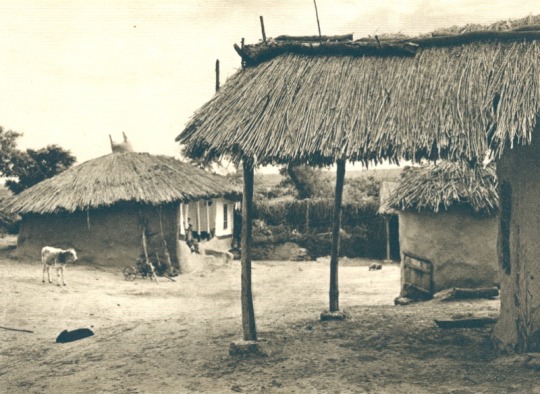
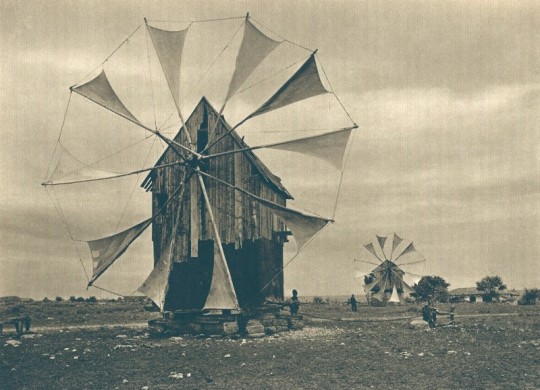
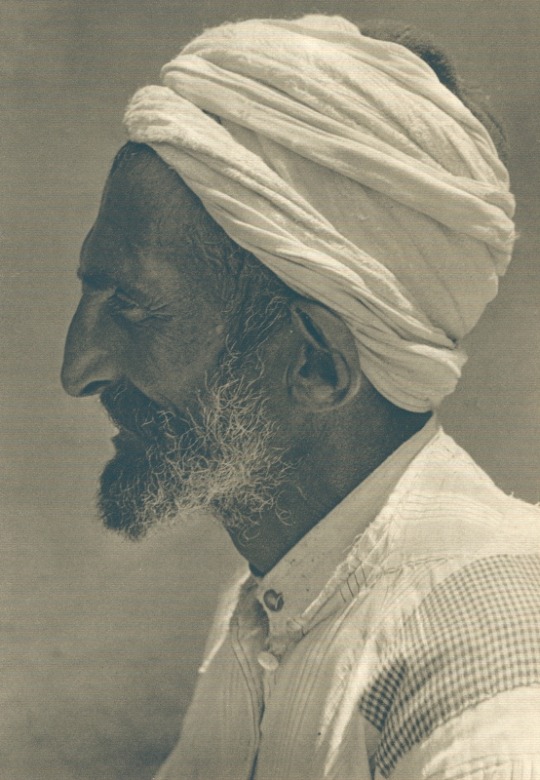

Invoking the 1907 Hague Convention, the Romanian government interned nearly 38,000 Dobrujans of non-Romanian origin in north of Iaşi, Moldavia during the First World War.Of them, 60% were of Bulgarian origin, and nearly 15% were Turkish. They were transported under difficult conditions - on foot, by river barges and by railway echelons to special camps. Nearly 3/4 of the internees died in the camps they were brought to. According to the Romanian authorities, the internment was only to the male population between 18-60 years old, and the rest (women, children, eldery) would be warned that they should not do anything wrong. However, this didn’t happen - the Bulgarian newspaper "Dobrudzha", which was published in Babadag, published the names, age and birthplace of every single internee. It can be seen that the internees are not only men, but there are also many children, as well as girls between the ages of 15-19.
Balchik was one of the cities that suffered the most from the internment. 73 citizens were abducted for work in Moldavia, 50 of them Turks. In Kavarna, 134 people were interned to Moldavia and 32 of them were Turks. Tutrakan was another city that lost many people - there were 691 interned, including 113 Turks. Among the Tutrakan Turks who went to Moldavia were also the child members of the Hüseyinov family - Nuriye (11), Vejdi (8) and Bahri (1). Even villages like Söyütçük (Vodno in Silistra), Nasradın (Bisertsi in Razgrad), Hacıköseler (Krushari in Dobrich) and Karayamurlar (Poroyno in Silistra) didn’t manage to go unnoticed. The total number of evicted people from these four villages alone is 327, of which 247 are Turks and 80 are Bulgarians.
#romania#romanian#ww1#wwi#dobruca#bulgarian#turkey#türkiye#osmanlı#ottoman#türk#turkish#turk#balkan#the balkans#eastern europe#europe#islam#muslims#muslim#deliorman#turkish history#history#moldavia#old photos#balkanlar#türk tarihi#dobrudja#balkan türkleri#göçmen
3 notes
·
View notes
Photo

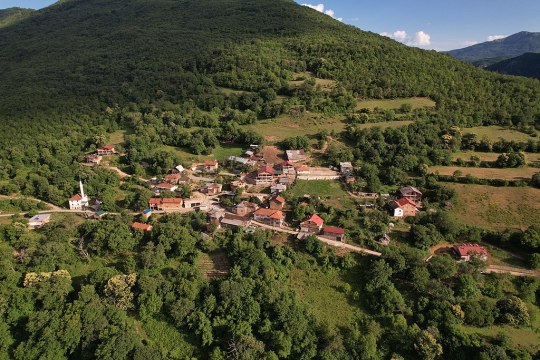


The Turkish villages of the Jupa region in North Macedonia.
The region is one of the westernmost points in the Balkans, where there are still ethnic Turks who preserve their language and culture. From this perspective, Župa plays an important role for the Balkan Turks. Although the region borders Albania, Župa has only one Albanian village, which is Balantsi. The rest are Macedonian Christian, Torbeshi and Muslim Turks.
When in 1900 the Bulgarian researcher Vasil Kanchov visited the region to write his book "Macedonia. Ethnography and Statistics", he indicated that in the region, out of a total population of 8309, 3380 were ethnic Turks (40%). The villages where the Turks lived in 1900 are the following: Gorno Elevtsi, Dolno Elevtsi, Dolgash, Turska Osolnitsa, Pralenik (the majority is Turkish, the minority is Bulgarian), Novatsi, Kojadik and Breshtani. Almost all the villages, except Pralenik, were completely Turkish.
He added the following: “Rostkovski's statistics for that kaza are completely unusable. In it, many villages are recorded crookedly beyond recognition. There are no mentions of the Turkish population in Zhupa. The Torbesh also are not mentioned in the kaza of Debre with a few exceptions. Many villages are places with non-existed Christian Albanian population. Many villages are recorded as Christians, and they (the Christians) have been entirely or in large part have been replaced by the Albanians. Verkovich's statistics are so completely unusable now, because they were made a long time ago and since then the population composition has changed a lot.”
The regions center used to be Kocacık, the birthplace of Mustafa Kemal Atatürk’s father. It used to be the largest village of Jupa with a population more than 1,250, all of them ethnic Turks.
#macedonia#jupa#zupa#türkiye#turkey#culture#traditionl#ethnology#ethnohistory#ethnography#history#landscape#balkan#the balkans#balkans#balkanlar#osmanlı#ottoman#ottoman empire#balkan türkleri#macedonian#bulgarian#torbesh#nationalism#albanian#europe#slav#turkish#turk#makedonya
0 notes
Photo





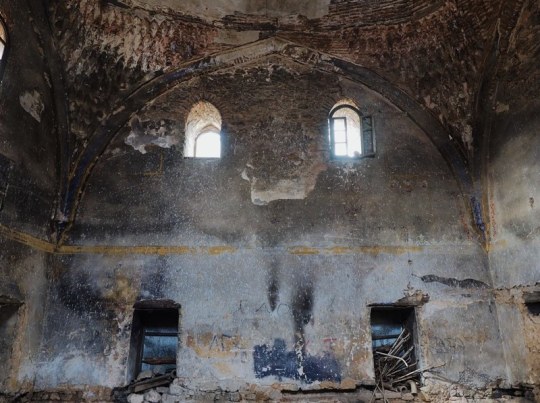
Kurşum Mosque, one of the seven mosques of Kesriye, or Kastoria in Greek, and the only mosque which survived out of these seven. It was built in 16th century and after the Balkan Wars (1912-1913) was used a librirary and warehouse; this was the only reason why Kurşum Mosque avoided destruction after the Balkan Wars, unlike the other six Ottoman-period mosques of the town.
#tangible cultural heritage#mosque#islam#greece#yunanistan#kesriye#kastoria#kostur#muslim#muslims#macedonia#makedonya#türkiye#turkey#ottoman#osmanlı#history#tarih#türk tarihi#turkish history#culture#architecture#islamic history#mimari#cami#camii#balkan#balkans#balkanlar#rumeli
9 notes
·
View notes
Photo
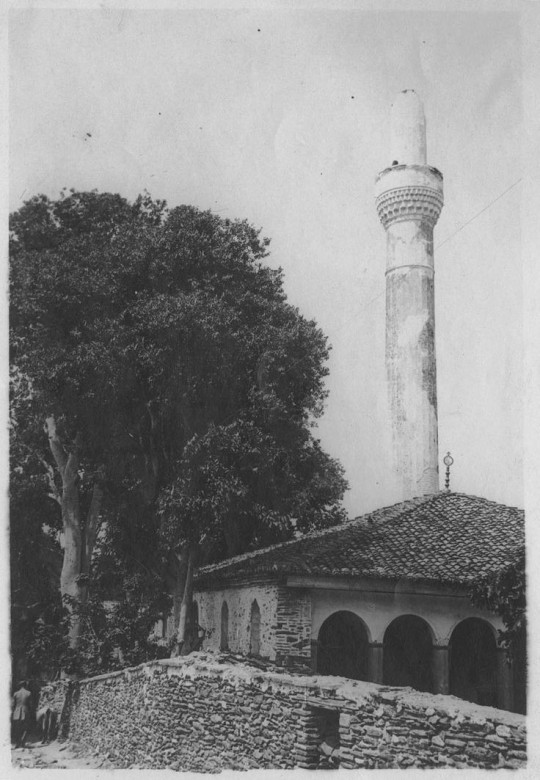
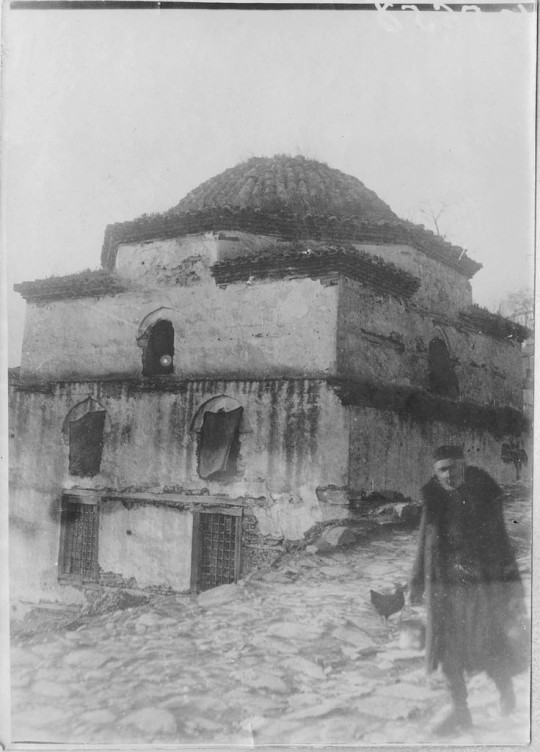
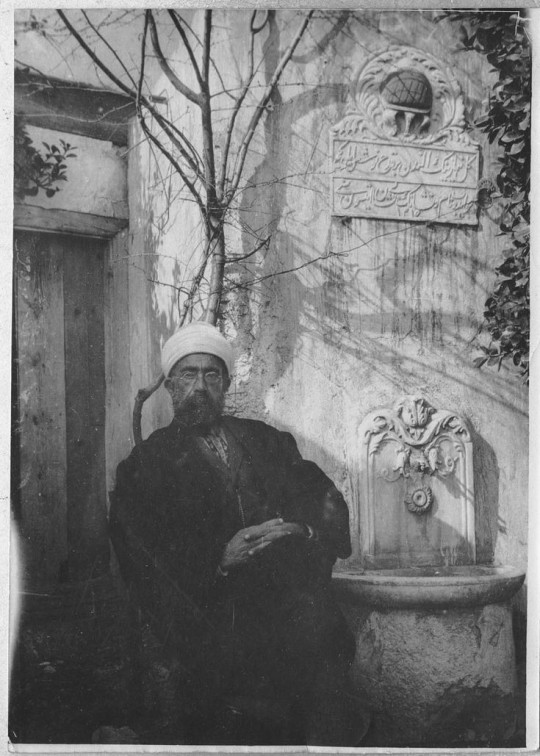
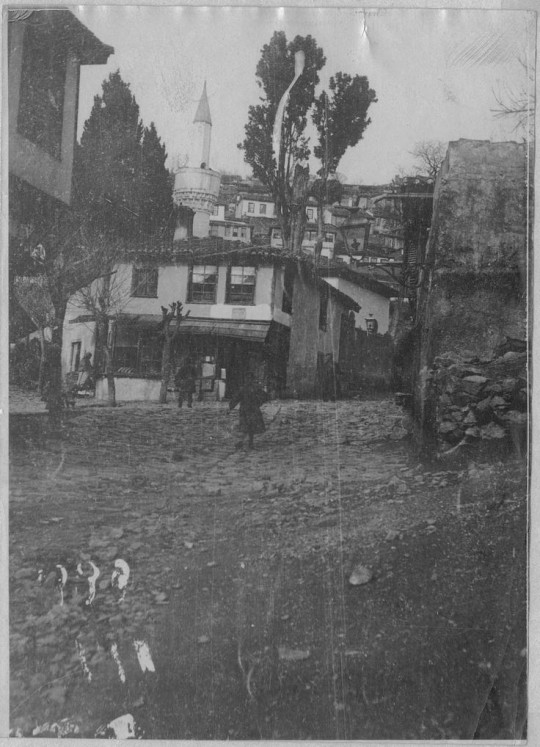
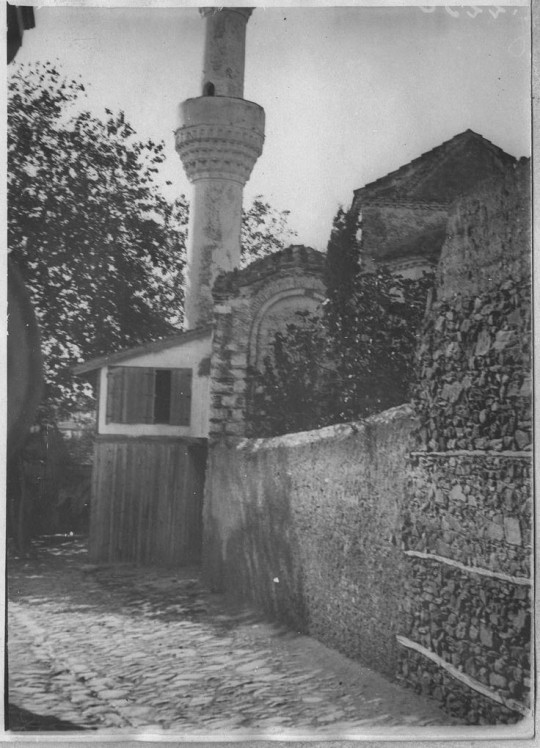



“ Salonica ceased to be an Ottoman city in November 1912. The capital city of Macedonia had been annexed by the Kingdom of Greece at a time when most of its population was non-Greek. Here, then, the main assignment was to obliterate the Ottoman heritage and to reinvent the Greek antecedents of the city.
In Salonica, various events facilitated the task of the Greek administration. One major factor of urban reorganization was the big fire of August 1917 which destroyed 9,500 buildings, or approximately two thirds of the city. When the reconstruction process came to an end in the 1930s, nothing much remained of the urban pattern as it had been shaped during the last decades of Ottoman presence. Many Jews had lost their property in downtown Salonica and had been forced to move to suburban quarters. When one looks at photos of the 1930s, one easily remarks that the city had lost, by then, its Oriental character. No minarets in view. No intricate streets. A rigid grid of avenues and lanes arranged following a chequered pattern had replaced the playful Ottoman city.
While the reconstruction process was going on, efforts were also made to resuscitate the Greek and Christian heritage of Salonica. The Hébrard plan foresaw highlighting of the main monuments of the city through a strategy of destruction of environing constructions and isolation of edifices of historical interest. Thus, small Byzantine churches, which had survived thanks to their invisibility, were transformed into major landmarks. In parallel, public squares were populated with statues of Greek national heroes and the façades of the buildings all around were covered with typically 'Greek' ornamental motifs, although remaining faithful to Hamidian neoclassicism.
After the departure of the Turks, the new image of Salonica drew mainly on the Christian and neo-Hellenic past of the city. But, like in other places in Greece, antiquity was also considered a major component of the city's memory. Although not much was done to revive ancient Salonica, subsequent to pioneering archaeological research by the French 'Armée d'Orient' between 1916 and 1919,24 some attention was nevertheless given to prominent late-Roman monuments such as the Rotunda, the Palace and Arch of Galerius, and the Agora.”
Source: Durmont, Paul. Salonica and Beirut: The Reshaping of Two Ottoman Cities of the Eastern Mediterranean, p. 195, 196, 197
#turkey#türkiye#macedonia#greece#yunanistan#salonica#thessaloniki#selanik#balkan#makedonya#balkanlar#the balkans#rumeli#architecture#mimari#history#turkish history#tarih#türk tarihi#osmanlı tarihi#ottoman history#jewish#mediterrenian#old#eski#old photography#balkan türkleri#the great fire of thessaloniki 1917#turkish#turk
8 notes
·
View notes
Photo


Isamettin Sirozi’s tomb - he was a member of the Sirozi family
-
The story of this family begins with Ismail Sirozi, an Ottoman separatist who ruled Siroz, a town in Macedonia, from around 1770 until his death in 1813. He had a small army that he sent to fight Russians, Austrians and Serbs, and accepted refugees fleeing the rule of another Ottoman separatists, Ali Pasha, who ruled around Yanya.
Among his successors is Yusuf Muhlis, who has lived in Istanbul for a long time, writing poetry and taking part in various events, including the suppression of the Mora uprising. He built a mosque in and a fountain in his hometown, for many years he was governor of Saruhan, Aleppo and Aydin.
Many people in their line worked as muftis in Macedonia. One of them was Isamettin, who, together with his brother Esat, saved many valuable manuscripts from Syros and brought them to the Suleymaniye Library.
Metin Serezli and Nevra Serezli, Turkish actors are also descendants of the Sirozi family.
#türkiye#turkey#ottoman#osmanlı#greece#yunanistan#bulgarians#serez#serres#сяр#Macedonia#balkan wars#balkan savaşları#tarih#history#culture#kültür
3 notes
·
View notes
Photo

Group of graduates of the Muslim Seminary from Mecidiye/Medgidia late 19th - early 20th century.
—
The Muslim seminary was established in 1610 in Babadağ. For its functioning and maintenance, the Turkish general Gazi Ali Paşa who participated in the siege against Vienna, donated his estate in Zebil village and Babadağ Lake. In 1837, with the financial support of Sultan Mahmut II a new building was built, which would host the seminary until 1901, with an interruption between 1877 and 1889. Based on article no. 21 of the Law on the organization of Dobruca, the seminary reopened and became a state institution. Changing the status of the seminary had two main consequences. Firstly, the entire estate used for maintaining this educational institution became the state’s property. Moreover, through the intermediary of the Ministry of Religious Affairs and Arts, the Romanian state commit-ted to financially support its functioning. Secondly, the Romanian state will intervene, especially after 1904, to regulate and synchronize the seminary curriculum with that of other educational institutions (synchronize: teaching Romanian together with Turkish and Arabic, and secular sciences together with theology)
In 1967 the Mecidiye Seminary, the only institution in Romania which was concerned about teaching the Turkish language and the reading of the Qu'ran in Arabic, in order to prepare students to become imams was closed, under the pretext that there were no more students interested in such teaching. After 1990, the president of Romania Ion Iliescu and the president of Turkey, Süleyman Demirel signed a protocol for the reestablishment of the Muslim Seminary of Mecidiye and for the reconstruction of the buildings of the former seminar. The Turkish government agreed to cover the expenses.
Photo source: ISPMN Turks and Tatars from Dobrogea exhibition. Memories
Info source: After “the Great War”: The Muslim Seminary in Medgidia in Greater Romania // Manuela Marin
Muslim Seminary of Medgidia // Familypedia
#romania#romanya#türk#turk#turkish#islam#mosque#cami#seminary#fakültet#ilahiyat#theolgy#history#tarih#kültür#culture#balkan turks#balkan türkleri#osmanlı#ottoman#balkans#balkanlar#rumelia#rumeli#europe#avrupa
1 note
·
View note
Text
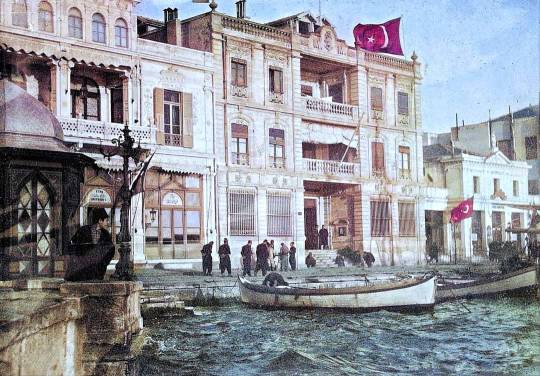
Ottoman Salonica, 1901
#turkey#Ottoma empire#Salonica#Thessaloniki#Selanik#Ottoman history#Balkans#Balkanlar#Rumeli#Yunanistan#Greece#Türkiye#Türk#Türk tarihi#Architecture#Mimari#Sanat#Art
3 notes
·
View notes
Photo
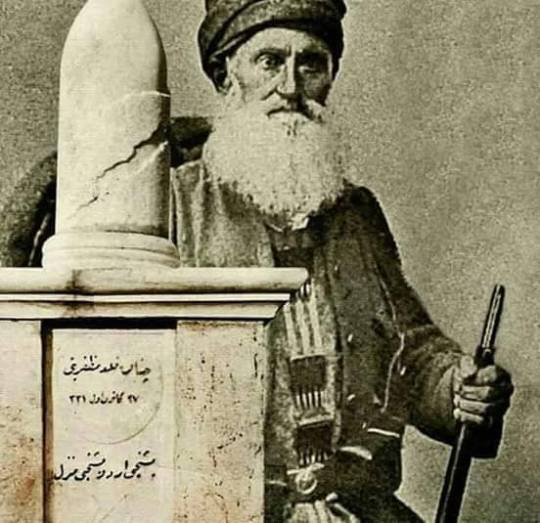
Eyüplü Hasan Efendi, the oldest Ottoman soldier who participated in the Balkan Wars. When the First Balkan War broke out in 1912, he was 66 years old and volunteered the same year.
#balkan wars#history#military#war#1912#ottoman#soldier#ottoman history#balkan history#istanbul#eyüp#turk#turkey#turkish#turkish history#asker#tarih#türk tarihi#europe#eastern europe#osmanlı#osmanlı tarihi#avrupa#türkiy#balkan#balkans#balkanlar#rumeli#rumelia#balkan savaşları
5 notes
·
View notes
Photo
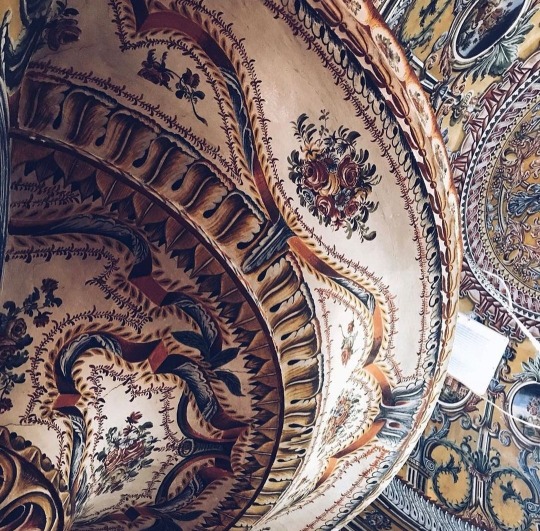
"The strings of my heart are elaborated flowers,
there they give birth to a garden of ours"
-
Mosque of Kalkandelen/Tevtovo, Macedonia
#tetovo#macedonia#rumelia#balkan#balkans#islamic history#ottoman#islam#mosque#muslims#europe#eastern europe#middle east#swana#turkey#turkish#poem#literature#beauty#Aesthetic#north macedonia#kuzey makedonya#türk tarihi#turkish history#turkish architecture#ottoman architecture#makedonya#kalkanedelen#balkanlar#rumeli
19 notes
·
View notes
Photo

An Ottoman monument in Şumnu, created to commemorate the visit of Sultan Mahmud II in 1837. The inscription reports the happiness of the citizens to see the ruler and praises his character and courage.
-
"Şerefle Şumnu'ya Isâ-yı dem Mahmud Han geldi"
#turkey#ottoman#bulgaria#balkan#balkans#history#sultan#shumen#rumelia#turk#turkish#balkan turks#muslims#islam#europe#eastern europe#türkiye#türk#bulgaristan#türk tarihi#turkish history#balkanlar#rumeli#balkan türkleri#müslüman#avrupa#doğu avrupa#şumnu#deliorman
1 note
·
View note
Photo
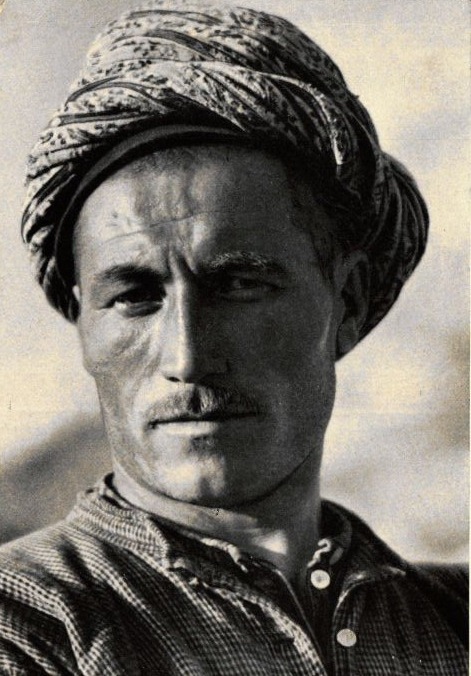
The image of the [Ottoman] Turks in the Gazavatname of Prizrenli Suzi Çelebi:
couplet 348: Bu Türk azdur deyü etme bahâne // Odun bir şu’lesi besdür cihâne
Don't find excuses because the Turks are outnumbered; Don't forget that one spark is enough to light the world! (a letter sent to the king by the enemies of Mihaloğlu Ali, perceiving that they were beset by the Turks, asking for help)
couplet 974: Nice bir Türk od ursun canumuza // Düşer mi bu hakaret şanumuza
If a Turk hits us with fire, is this insult worthy of our glory? (said by Mihaoğlu Ali’s rival)
couplet 1075: Tutalum cümlesin Türkün diri biz // Kılalum şad-man bu kişveri biz
Let's keep all the Turks alive so that our country will be happy (said by Mihaloğlu Ali)
Photo: Turkish man from Şumnu, Tuzluk region
#prizren#kosovo#poetry#ottoman#literature#nationalism#history#balkan#balkans#the balkans#şumnu#shumen#bulgaria#turkey#turkish#türk#edebiyat#türkiye#suzi çelebi#kosova#balkanlar#rumeli#rumeli türkleri
10 notes
·
View notes
Photo


How the Pashas of Buda started to write in Hungarian
In diplomatic communication the Pashas of Buda (Budapest) started using Hungarian instead of Latin, and Hungarian became one of the diplomatic languages of the 16th century. This makes the letters important for studying the state of the Hungarian language in the 16th century. Although the desire of the Budin Pashas to communicate in Hungarian was not liked by the Austrians (because the Hungarian language was discriminated), they were eventually forced to accept it. The reason for this is mentioned by Arslan Pasha in 1565, October 26:
“Also, when you write a letter to me, I ask you to write it in Hungarian. Because the number of those who know the clerk's writing well is very few and sometimes I can hardly get your letters explained.”
Not that it was easy for the Austrians to understand the Hungarian letters of the Budin Pashas very well. Whether out of ignorance or for some other reason, many words and sounds were spelled differently. For example, the Hungarian word for “our god” is istenünk, but it was written as istennewnk. The Hungarian word öket (them) is written as ewkoth, ugyan (same) is spelled vgian, tudja (you know) is tugya. Even Turkish names and terms were Hungarianized - Zyinan for Sinan, Payazyth fo Bayazit, Kazsom for Kasım, zancziak for sancak, etc.
Naturally, this does not mean that Latin has been completely abolished. Salutations continued to be in Latin:
“Illustri ac magnificio domino, et domino domino Thwyghon passe Budensi, ac imperatoris Turcarum in Hungaria locumtenenti ect. domino nobis graciosmo”
From the period 1553 to 1578 (25 years), 153 letters of Budin pashas written in Hungarian have been discovered. These sealed official documents were published by Academy of Hungarian Sciences in 1915.
Source: Budin Paşalarının Macar dilini kullanımı/Yasemin Ataylı
Photo: Yakovalı Hasan Paşa mosque
#hungary#hungarian#language#linguistique#turkish#ottoman#austrian#habsburg#medieval#history#letters#balkan#balkans#europe#colonizers?#islam#christianity#catholocism#türkiye#macar#macaristan#budin#budapeşte#cam#mosqu#budapest#dil#türkçe#macarca#paşa
3 notes
·
View notes
Photo
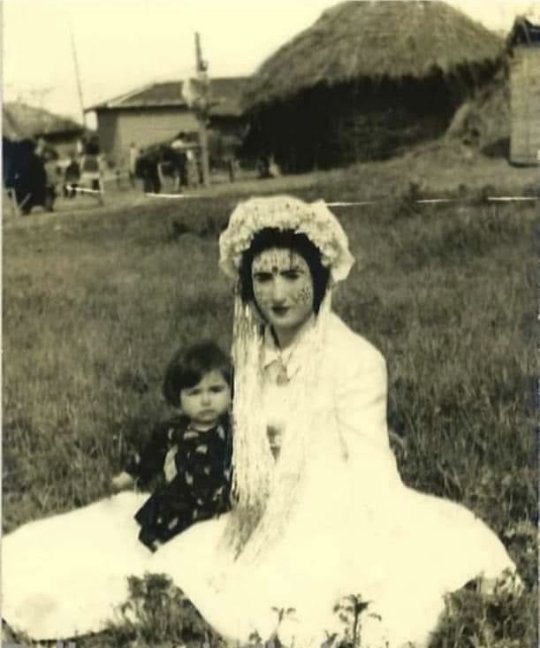
Turkish bride from the Eastern Balkans
#turkish#turk#turkey#balkan#balkans#bulgaria#bride#tradition#traditional#folklore#folkcore#ottoman history#history#ottoman#eastern europe#europe#communism#balkanlar#türk#türkiye#gelin#gelenek#geleneksel#Rumeli Türkleri#bulgaristan#rumeli#balkan türkleri#balkan turks
9 notes
·
View notes
Photo

Turkish women from Civirli, Karınabad, Burgas province, 1982.
-
Majority of Civirli's population is of Turkish ethnicity. After the Russo-Turkish war (1878) the village was in Eastern Rumelia, an autonomous province within the Ottoman Empire, but with the provice's annexation in 1885 by the Kingdom of Bulgaria, Civirli also became part of the Kingdom.
It was renamed to Dragovo in 1934.
#civirli#bulgaria#bulgarian#turk#turkish#turkey#türk#türk tarihi#osmanlı#ottoman#balkan#balkans#balkanlar#rumelia#rumeli#history#tarih#tradition#traditional#folklore#communism#bulgaristan#türkiye#balkan turks#balkan türkleri
3 notes
·
View notes
Photo

Turkish children with their Bulgarian teacher in Mumcular, before 1934.
-
The settlement has a long history since the Thracian times, but it was reborn, again, during the Ottoman era, when a tekke (Islamic monastery) was founded close to it. Since candles were used for every tekke, this settlement was "created" again to afford the place with candles.
Mumcular literally in Turkish means candlemakers. In 1934, Mumcular's name was Bulgarized to Sveshtari, direct translation from the Turkish word.
Just like many villages of Razgrad, majority of Mumcular's population is of Turkish origin.
#turk#turkish#village#eastern europe#europe#history#turkey#bulgaria#balkan#balkans#the balkans#rumelia#rumeli#balkanlar#bulgaristan#türk#türkiye#tarih#türk tarihi#ottoman#osmanlı#balkan turks
2 notes
·
View notes